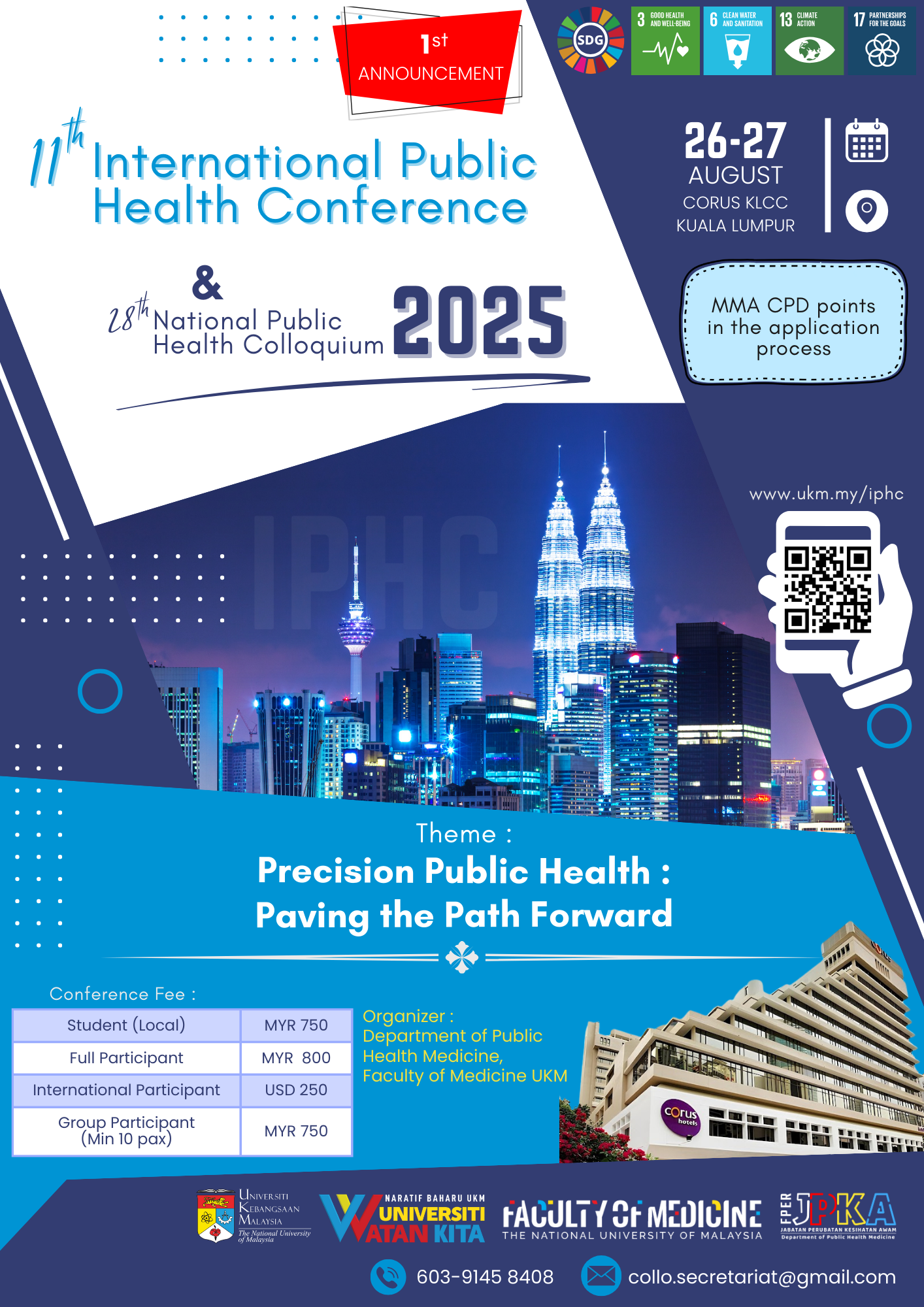The Prevalence of Non-Communicable Diseases among older age group in Malaysia and Its Effects on Health Care Demand
Keywords:
Diabetes, elderly, health care utilization, hypertension, non-communicable diseasesAbstract
Introduction
The prevalence of non-communicable diseases (NCDs) in Malaysia shows a rising trend that influences the society in many respects. A country specific evidence is vital for effective intervention. The aims of this study were to identify the role of gender and urbanization status on NCDs prevalence and its effect on health care demand, specifically doctor visits among Malaysian older age group.  We focused on two of the highest occurrence NCDs in the country – diabetes and hypertension.
Methods
A total of 1,414 respondents aged 60 years and above were selected using a multistage sampling for face-to-face interview. We started the analysis with descriptive analysis of the prevalence, taking the effect of gender and urbanization status of residing area. We extended the study with parametric analysis to find the effect of these health problems on the likelihood of doctor visits as it reflects the equity for access and utilization issues.
Results
Results showed that there was a significant difference of prevalence by gender for hypertension but not diabetes. The prevalence was higher at urban setting but with no significant difference. By utilizing probit model, we found that those with diabetes or hypertension, controlling for other variables, were more likely to utilize doctor services.
Conclusion
This result implies that the prevalence of NCDs may further increase demand for health care, especially in the state with a high proportion of older age groups.Â
Keywords
Diabetes, elderly, health care utilization, hypertension, non-communicable diseases
Â
References
Negin J, Cumming R, de Ramirez SS et al. Risk factors for non-communicable diseases among older adults in rural Africa. Trop. Med. Int. Health 2011; 16 (5):640-6.
Promthet S, Saranrittichai K, Kamsa-ard S et al. Situation Analysis of Risk Factors Related to Non-communicable Diseases in Khon Kaen Province, Thailand. Asian Pac. J. Cancer Prev. 2011; 12 (5):1337-40.
Silva-Matos C, Beran D. Non-communicable diseases in Mozambique: risk factors, burden, response and outcomes to date. Global Health 2012; 8.
MOH. National strategic plan for non-communicable disease: Medium term strategic plan to further strengthen the cardiovascular diseases & diabetes prevention & control program in Malaysia (2010-2014). In., Series National strategic plan for non-communicable disease: Medium term strategic plan to further strengthen the cardiovascular diseases & diabetes prevention & control program in Malaysia (2010-2014). Putrajaya: Ministry of Health Malaysia (MOH) 2010.
WHO. Global status report on non-communicable disease. Geneva: World Health Organization.
WHO. Noncommunicable Diseases in the South-East Asia RegionWorld Health Organization.
Ayernor P. Diseases of Ageing in Ghana. Ghana Med. J. 2012; 46 (2 Suppl):18-22.
Sazlina SG, Zaiton A, Nor Afiah MZ et al. Predictors of health related quality of life in older people with non-communicable diseases attending three primary care clinics in Malaysia. J. Nutr. Health Aging 2012; 16 (5):498-502.
Angkurawaranon C, Wattanatchariya N, Doyle P et al. Urbanization and non-communicable disease mortality in Thailand: an ecological correlation study. Trop. Med. Int. Health 2013; 18 (2):130-40.
Boutayeb A, Boutayeb S. The burden of non communicable diseases in developing countries. Int J Equity Health 2005; 4 (1):2.
Edwards R, Unwin N, Mugusi F et al. Hypertension prevalence and care in an urban and rural area of Tanzania. J. Hypertens. 2000; 18 (2):145-52.
Peters DH, Garg A, Bloom G et al. Poverty and Access to Health Care in Developing Countries. Annals of the New York Academy of Sciences 2008; 1136 (1):161-71.
Miszkurka M, Haddad S, Langlois EV et al. Heavy burden of non-communicable diseases at early age and gender disparities in an adult population of Burkina Faso: World Health Survey. BMC Public Health 2012; 12.
EPU. The Third Outline Perspective Plan, 2001-2010. Putrajaya: Economic Planning Unit (EPU), Malaysia.
Angkurawaranon C, Lerssrimonkol C, Jakkaew N et al. Living in an urban environment and non-communicable disease risk in Thailand: Does timing matter? Health Place 2015; 33:37-47.
Angkurawaranon C, Wisetborisut A, Rerkasem K et al. Early life urban exposure as a risk factor for developing obesity and impaired fasting glucose in later adulthood: results from two cohorts in Thailand. BMC Public Health 2015; 15:902.
Aday LA, Andersen R. A Framework for the Study of Access to Medical Care. Health Serv. Res. 1974; 9 (3):208-20.
Downloads
Published
How to Cite
Issue
Section
License
IJPHR applies the Creative Commons Attribution (CC BY) license to articles and other works we publish. If you submit your paper for publication by IJPHR, you agree to have the CC BY license applied to your work. Under this Open Access license, you as the author agree that anyone can reuse your article in whole or part for any purpose, for free, even for commercial purposes. Anyone may copy, distribute, or reuse the content as long as the author and original source are properly cited. This facilitates freedom in re-use and also ensures that IJPHR content can be mined without barriers for the needs of research.






